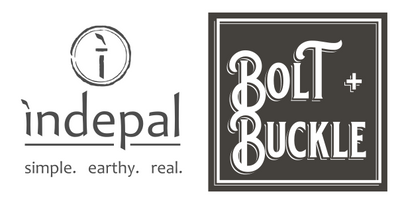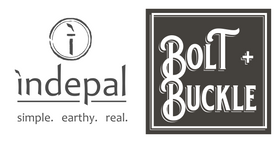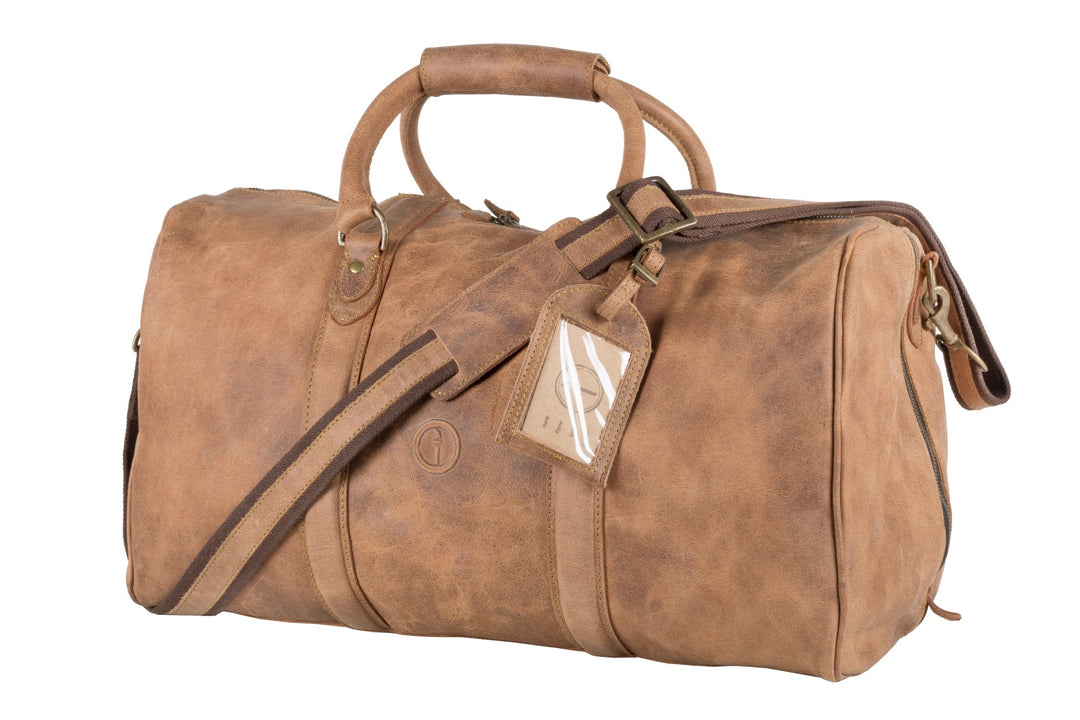Don't buy leather! (Until you've read this article)

When you head out to buy your next/first leather bag, it's important to know the answer to this question: When is leather not really leather?
Before we answer the question of what leather isn't, perhaps we should find out what leather is.
The most basic definition of leather is the natural hide of an animal (cow, buffalo, sheep, goat) that is tanned and finished in a variety of processes to create a durable and beautiful product, in our case, a leather bag. Essentially, it’s a material as nature intended it to be, with a few embellishments and improvements added for good measure.
So what isn't real leather?
Vinyl
I don't think this needs much explanation. Whilst vinyl records are cool, vinyl bags, jackets, couches are very uncool. If someone tries to sell you a new "leather look" bag for $20... run. It's probably vinyl.
Sure... it's cheap, but for a reason. And it won't last.
PU ‘Leather’

As a manufacturer of genuine premium leather bags and products, one of the terms that really irks me is "PU Leather". "PU" stands for polyurethane which means *deep breath* a synthetic resin in which polymer units are linked by urethane groups, used chiefly as constituents of paints, varnishes, adhesives, and foams (according to the Oxford Dictionary). So calling it PU Leather is kinda like trying to convince someone that plastic bananas are fruit. It's not leather. It's not even close. Its, at best, slightly better than vinyl.
Pros: Cheap.
Cons: It won't soften with age. It won't improve with age. It won't last as long as leather. It's not leather.
*Note: Some PU leathers have a cheap 'split' leather base with a PU coating. Technically, this is still leather, but it's a sub-standard grade.
Bonded Leather/Reconstituted Leather

OK… so this is kinda, sorta, leather-ish. But it’s like saying that chicken nuggets are kinda, sorta breast fillet.
Bonded (or reconstituted) leather is where all the scraps of leather that were too small to make into a bag/wallet/shoe/etc are turned into leather crumbs and then glued onto a canvas backing. The marketing can say “leather” but this is the leather that is going to peel and disappoint in next to no time. If the item you’re looking at is really cheap compared to other similar items you’ve looked at, then buyer beware! If you can see the back of the leather, the canvas will be obvious. Unfortunately with most bags, or say something like a sofa, you can’t always see the underside. If you’re unsure, the best thing to do is ask the person you’re buying it from “is this full grain/top grain leather?”. If they can’t tell you or won’t tell you, then approach with caution.
Pros: Cheap.
Cons: It won't soften with age. It won't improve with age. It will most likely peel. It won't last as long as leather. It's not leather.
Split Leather

So, now we’re getting a little closer. Full-grain leather is the full thickness hide. Top grain leather is, as the name suggests, the top part of the hide with the flesh side removed. That flesh side on its own is known as split leather.
So, yeah, it’s leather, but it with some downsides.
Some split leather is sealed using polyurethane, so you’re not really getting that leather ‘feel’ even though it’s actually leather. It also doesn’t exhibit any of the same wear or comfort characteristics of the top grain.
Other split leathers won’t have any sealing, but whilst you’re now getting the ‘feel; of leather, you’re still not getting those premium attributes of top grain.
When split leather is initially produced, it’s ‘furry’ on both the top and bottom of the hide. Whereas the traditional top grain leather is smooth and soft to the touch with natural variations in color and appearance. It will also have unique ‘bumps’ called pebbling.
Split has none of these so it therefore has to go through various processes to simulate the top grain feel and appearance. In summary, it looks and feels bland and a little synthetic compared to the real deal.
Pros: Cheap.
Cons: Lacks strength, doesn’t feel great, sealers make it look synthetic.
‘Cheap’ Leather
One other thing to watch out for. There is some ‘genuine’ leather out there that is still not great. Be wary of these cheap leathers as they can smell or rot due to a poor tanning process.
Pros: Cheap.
Cons: Can smell, rot and eventually disintegrate.
If you want real leather, you want Top Grain or Full Grain Leather
This is the best part of the hide and hence makes the best leather. It has the strength, durability and texture of what we all know as 'real' leather. All leather can be tanned differently to produce different finishes and textures, but it's the quality of the starting point that really matters.
Pros: It looks, smells and feels like real leather because it is, and it will bring you many years of joy.
Cons: You'll pay more for quality.
Summary
You may have noticed that all the ‘Pros’ for the premium leather alternatives above, contain the word ‘cheap’. There’s no doubt that quality costs money, but as Aldo Gucci says, “quality is remembered, long after the price is forgotten”.
If you’re investing in a quality leather bag, or leather anything soon, keep an eye out for the cheap alternatives and make sure you’re getting what you think you’re paying for.







Leave a comment